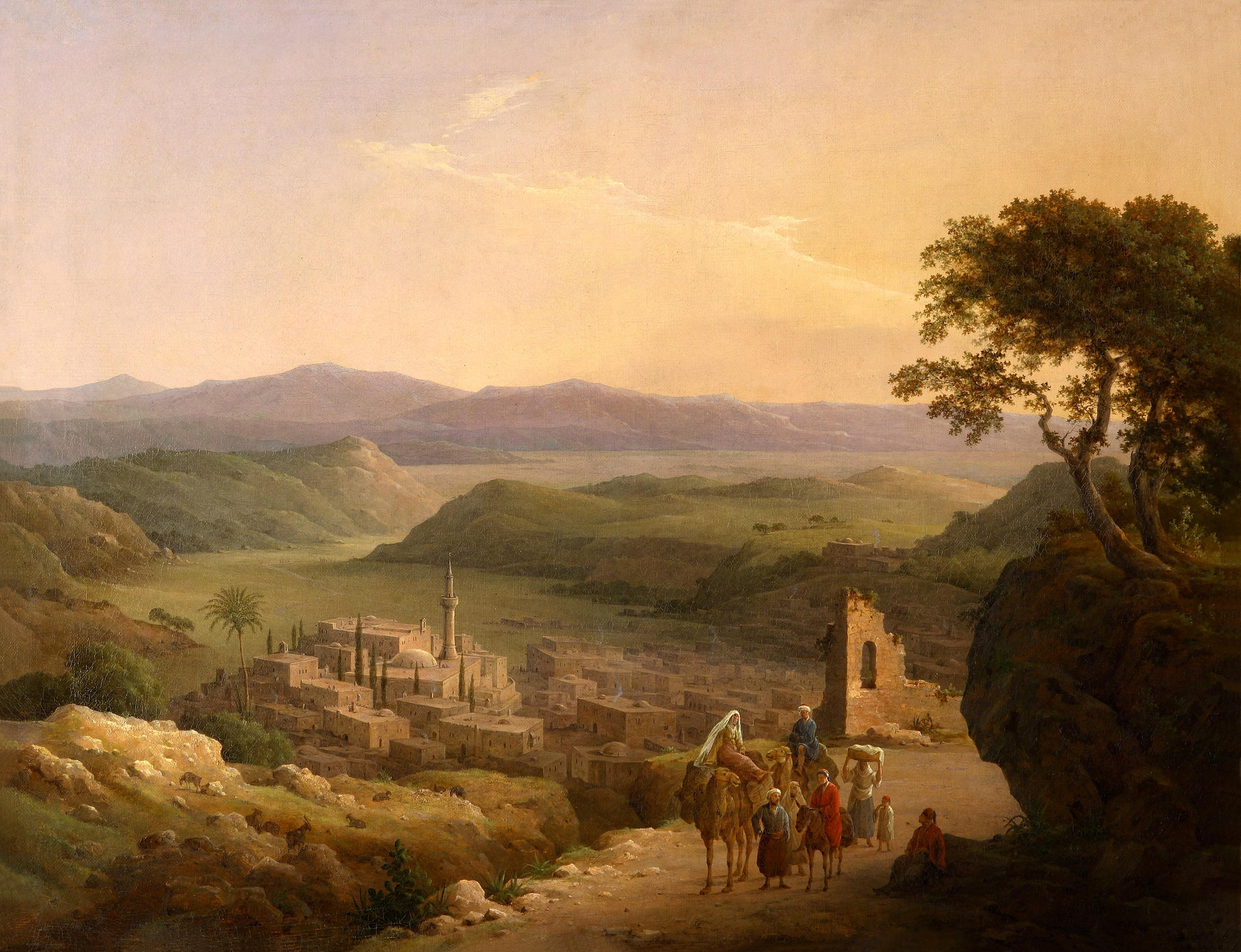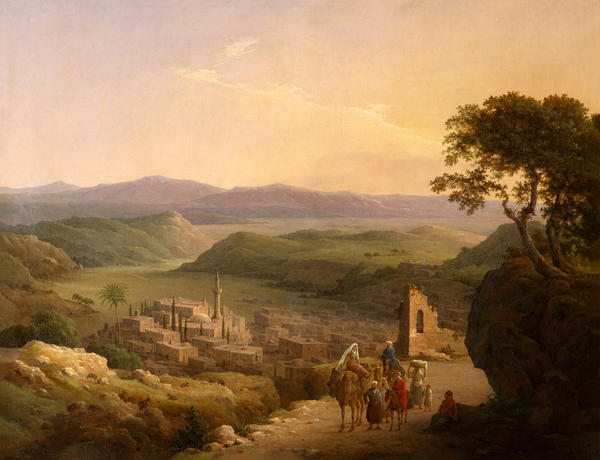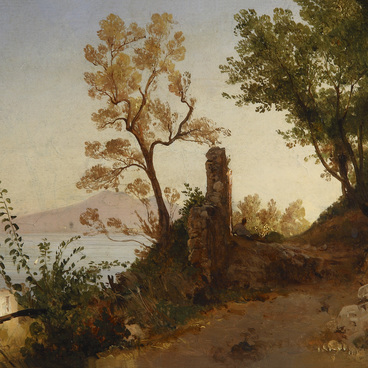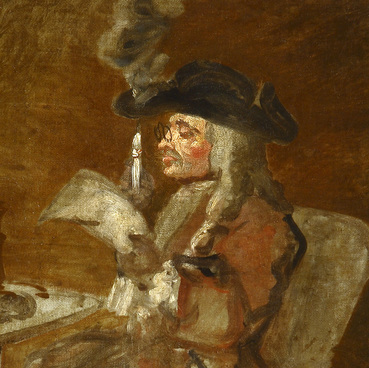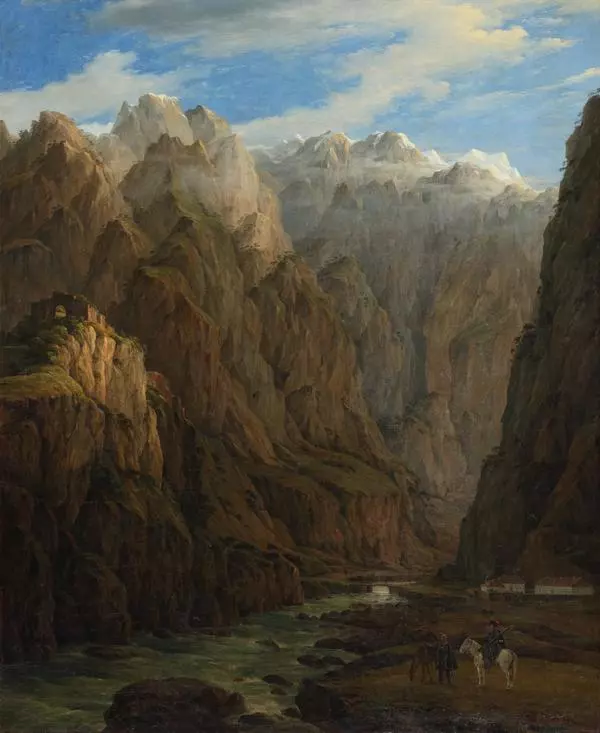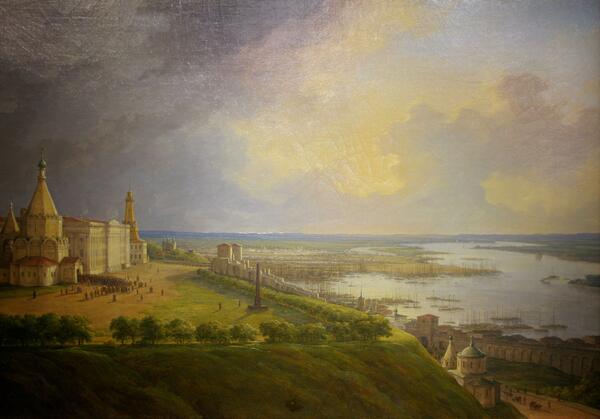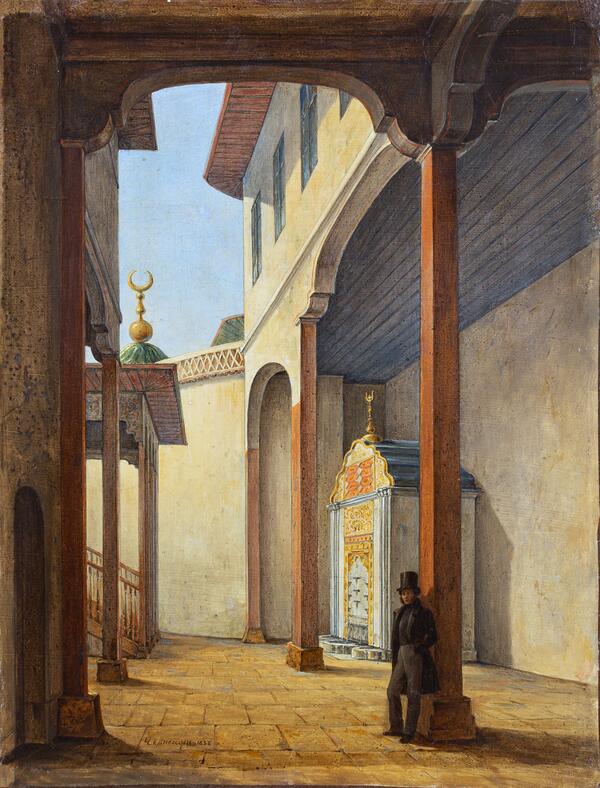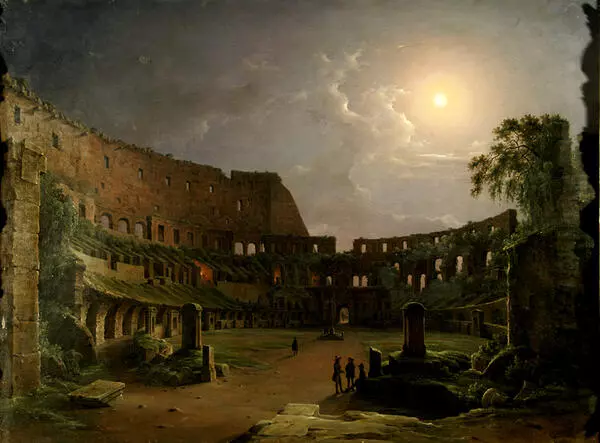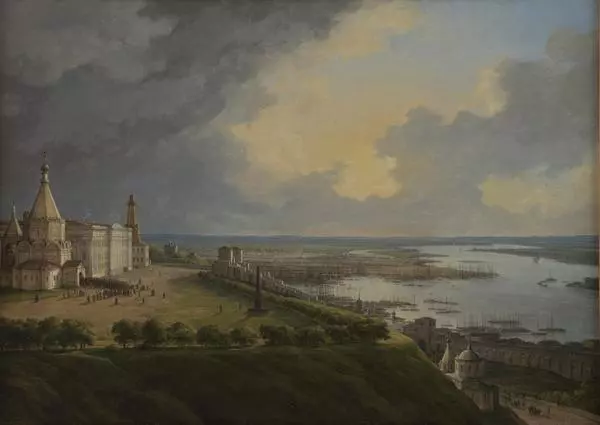Nikanor Chernetsov was born in Kostroma Province in the family of an icon writer. He was educated at the Imperial Academy of Arts in the class of landscape painter Maxim Vorobyov. Upon graduating from the academy in 1827 he received a large gold medal, later being awarded the rank of academician.
Until 1836 Chernetsov served with the New Russian Governor-General Mikhail Vorontsov in Crimea, where he painted many landscapes.
In 1841, together with his three brothers, who were artists like him, Nikanor Gregory went to the Holy Land, from Egypt to Palestine. Traveling to holy places, the brothers wrote a series of canvases with views of ancient temples and their interiors. Nazareth is small but third most important, after Jerusalem and Bethlehem city. It is a sacred for all Christians. Nazareth is located in the northern part of Palestine called Galileo. According to the Gospel, the Annunciation, an event when archangel Gabriel informed the Virgin Mary of the future birth of Christ, took place in Nazareth. Jesus Christ also spent his childhood and youth period in Nazareth.
The painting shows Nazareth with all precision, exactly as Nikanor Chernetsov saw it in 1842. The town is located in a picturesque valley surrounded by a chain of hills. In the background, there’s a covered with lilac smoke mountain range. There’s a small fragment of rocky mountain road in the foreground. This is the holy road which Christ walked on with his Mother and Father Joseph to Jerusalem for the feast of Easter.
The group of travelers depicted in the painting dredges up images of the Holy Family. To make picture look more realistic, the artist skillfully paints small details: stones, shrubs, a herd of grazing mountain goats, Aleppo pine trees in the foreground.
The painting is made on the principle of classical landscape, what means that it can be imaginary divided into three parts or three color zones. In the foreground, the artist used warm ochre tones. Then there’re green and blue tones. There’s the sky in gentle pink and yellow tones in the third zone.
The colorful layer of the painting is so light and airy that it resembles a watercolor.
Chernetsov returned to St. Petersburg in 1843, and painted using sketches created in the East in his workshop.
The landscape ‘The View of Nazareth in Galileo, ’ was painted by Nikanor Chernetsov in 1869, and reflects the most mature, near-realism stage of the artist-academician’s work.
Until 1836 Chernetsov served with the New Russian Governor-General Mikhail Vorontsov in Crimea, where he painted many landscapes.
In 1841, together with his three brothers, who were artists like him, Nikanor Gregory went to the Holy Land, from Egypt to Palestine. Traveling to holy places, the brothers wrote a series of canvases with views of ancient temples and their interiors. Nazareth is small but third most important, after Jerusalem and Bethlehem city. It is a sacred for all Christians. Nazareth is located in the northern part of Palestine called Galileo. According to the Gospel, the Annunciation, an event when archangel Gabriel informed the Virgin Mary of the future birth of Christ, took place in Nazareth. Jesus Christ also spent his childhood and youth period in Nazareth.
The painting shows Nazareth with all precision, exactly as Nikanor Chernetsov saw it in 1842. The town is located in a picturesque valley surrounded by a chain of hills. In the background, there’s a covered with lilac smoke mountain range. There’s a small fragment of rocky mountain road in the foreground. This is the holy road which Christ walked on with his Mother and Father Joseph to Jerusalem for the feast of Easter.
The group of travelers depicted in the painting dredges up images of the Holy Family. To make picture look more realistic, the artist skillfully paints small details: stones, shrubs, a herd of grazing mountain goats, Aleppo pine trees in the foreground.
The painting is made on the principle of classical landscape, what means that it can be imaginary divided into three parts or three color zones. In the foreground, the artist used warm ochre tones. Then there’re green and blue tones. There’s the sky in gentle pink and yellow tones in the third zone.
The colorful layer of the painting is so light and airy that it resembles a watercolor.
Chernetsov returned to St. Petersburg in 1843, and painted using sketches created in the East in his workshop.
The landscape ‘The View of Nazareth in Galileo, ’ was painted by Nikanor Chernetsov in 1869, and reflects the most mature, near-realism stage of the artist-academician’s work.
